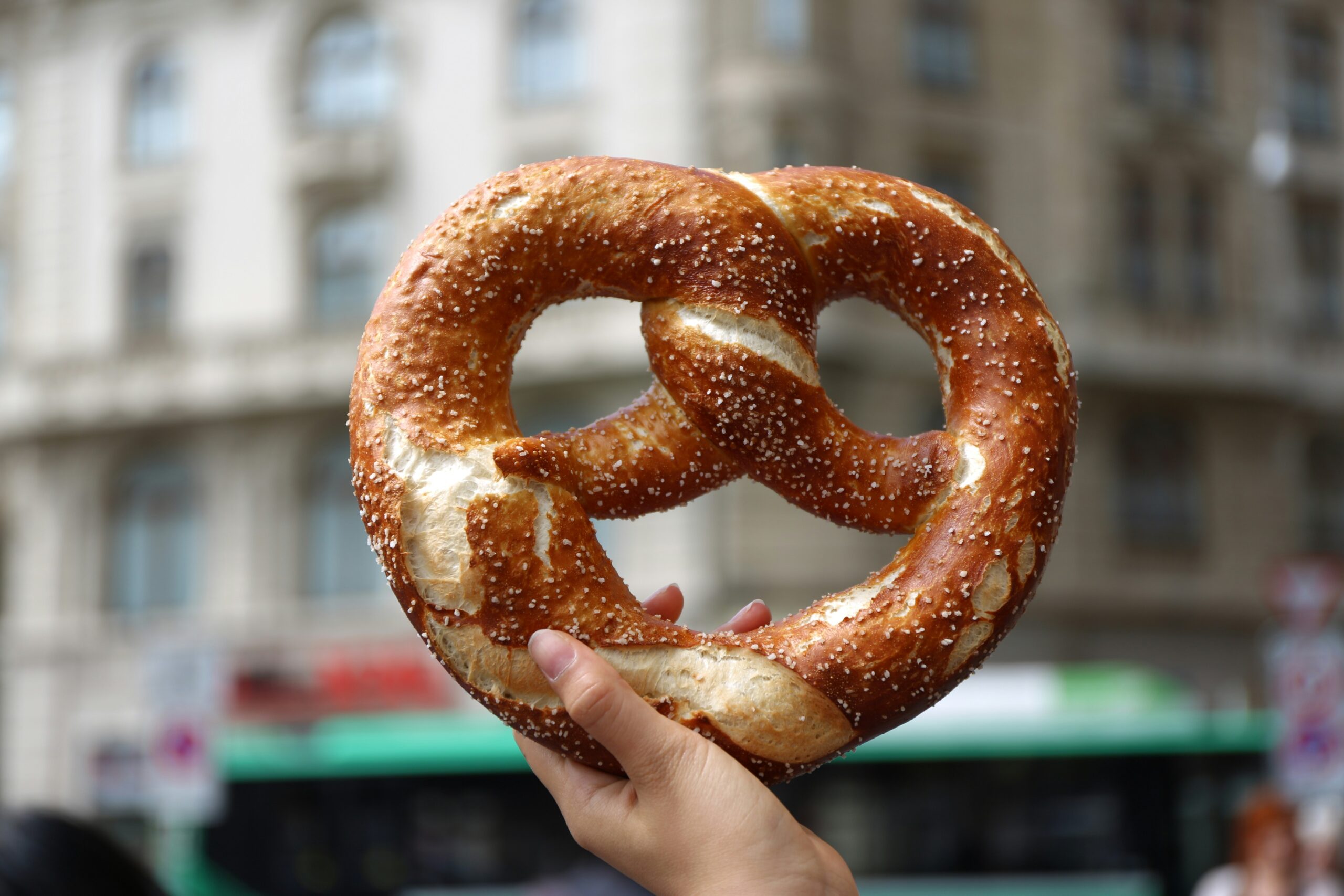Germany, known for its rich history and vibrant culture, also boasts a diverse and delicious culinary scene. From hearty regional specialties to modern gastronomic delights, German cuisine offers something for everyone. In this blog, we’ll explore must-try dishes, popular restaurants, and the unique food culture that makes Germany a culinary destination.
Must-Try Dishes
1. Bratwurst
Description: Bratwurst is a type of German sausage made from pork, beef, or veal. It’s seasoned with a blend of herbs and spices, and typically grilled or fried.
Where to Try: Bratwurst is a staple at street food stalls, beer gardens, and traditional German restaurants across the country. Some of the best places to try it include Nuremberg, known for its Nuremberger Bratwurst, and Thuringia, where Thuringian Bratwurst is a regional specialty.
2. Sauerkraut
Description: Sauerkraut is finely shredded cabbage that has been fermented with lactic acid bacteria. It’s often served as a side dish with meats, especially sausages.
Where to Try: Sauerkraut can be found in nearly every traditional German restaurant. It pairs exceptionally well with sausages and pork dishes.
3. Schnitzel
Description: Schnitzel is a breaded and fried meat cutlet, usually made from pork or veal. The most famous version is the Wiener Schnitzel, which originates from Austria but is widely popular in Germany.
Where to Try: Popular schnitzel restaurants include Figlmüller in Vienna (for the original experience) and Schnitzelwirt in Munich.
4. Pretzel (Brezel)
Description: Pretzels are a type of baked bread product, typically twisted into a knot shape and sprinkled with coarse salt.
Where to Try: Pretzels are commonly found in bakeries, beer gardens, and at festivals like Oktoberfest. Munich and Bavaria are particularly famous for their pretzels.
5. Spätzle
Description: Spätzle is a type of soft egg noodle, often served as a side dish with meat or as a main dish with cheese and fried onions (Käsespätzle).
Where to Try: Swabia, in southwestern Germany, is the home of Spätzle. Look for it in traditional restaurants in Stuttgart and the Black Forest region.
6. Sauerbraten
Description: Sauerbraten is a pot roast, usually made from beef, that has been marinated for several days in a mixture of vinegar, water, and a variety of seasonings.
Where to Try: This dish is a staple in Rhineland and can be found in many traditional German restaurants.
7. Black Forest Cake (Schwarzwälder Kirschtorte)
Description: This iconic dessert consists of layers of chocolate sponge cake sandwiched with whipped cream and cherries, and decorated with more whipped cream, cherries, and chocolate shavings.
Where to Try: The Black Forest region is the best place to enjoy an authentic slice of Black Forest Cake.
8. Currywurst
Description: Currywurst is a popular fast food consisting of steamed, then fried pork sausage cut into slices and seasoned with curry ketchup.
Where to Try: This dish is particularly popular in Berlin, with Curry 36 and Konnopke’s Imbiss being famous spots.
9. Flammkuchen
Description: Flammkuchen, also known as „Tarte Flambée,“ is a thin, crispy dough topped with crème fraîche, onions, and lardons.
Where to Try: This dish originates from the Alsace region and can be found in southwestern Germany and parts of France.
10. Rouladen
Description: Rouladen are thin slices of beef rolled around a filling of bacon, onions, pickles, and mustard, then braised until tender.
Where to Try: This dish is commonly served in traditional German households and restaurants, especially during festive seasons.
Popular Restaurants
1. Hofbräuhaus, Munich
Description: A historic beer hall offering traditional Bavarian cuisine, live music, and a lively atmosphere.
Specialties: Pretzels, sausages, and roast pork with dumplings.
2. Zur Letzten Instanz, Berlin
Description: Berlin’s oldest restaurant, serving traditional German dishes in a historic setting.
Specialties: Eisbein (pork knuckle) and Königsberger Klopse (meatballs in white sauce).
3. Restaurant Tim Raue, Berlin
Description: A Michelin-starred restaurant offering modern Asian-inspired cuisine with a German twist.
Specialties: Innovative dishes that combine German ingredients with Asian flavors.
4. Alte Kanzlei, Stuttgart
Description: A classic Swabian restaurant known for its authentic regional dishes.
Specialties: Maultaschen (Swabian ravioli) and Spätzle.
5. Im Schiffchen, Düsseldorf
Description: A Michelin-starred restaurant that blends French and German culinary traditions.
Specialties: Gourmet interpretations of classic German dishes.
6. Fischereihafen Restaurant, Hamburg
Description: A renowned seafood restaurant offering fresh fish and maritime delicacies.
Specialties: North Sea crab and Hamburg-style fried fish.
7. Ständige Vertretung, Cologne
Description: A politically themed restaurant known for its Rhineland specialties and unique decor.
Specialties: Himmel un Ääd (Heaven and Earth), a dish of mashed potatoes and apples with blood sausage.
German Food Culture
Regional Variations
German cuisine is highly regional, with each area boasting its own specialties and traditions. For example:
- Bavaria: Known for hearty dishes like Schweinshaxe (pork knuckle) and Weisswurst (white sausage).
- Rhineland: Famous for Sauerbraten and Himmel und Erde (potatoes and apples with black pudding).
- Saxony: Known for sweet treats like Dresdner Stollen (Christmas fruit bread) and Quarkkeulchen (curd cheese pancakes).
Seasonal and Festival Foods
Germany has a rich tradition of seasonal and festival foods:
- Oktoberfest: Celebrated with roasted meats, pretzels, and plenty of beer.
- Christmas Markets: Offer treats like Glühwein (mulled wine), Lebkuchen (gingerbread), and Bratwurst.
- Easter: Features dishes like lamb, eggs, and sweet pastries.
Dining Etiquette
Understanding German dining etiquette can enhance your culinary experience:
- Tipping: It’s customary to round up the bill or leave a 5-10% tip.
- Punctuality: Being on time for meals is important.
- Formal Meals: In more formal settings, wait until the host starts eating or gives a signal to begin.
Beer and Wine
Germany is world-renowned for its beer culture, with hundreds of breweries producing a wide variety of beers. Key highlights include:
- Beer Types: Pilsner, Weizenbier (wheat beer), and Dunkel (dark beer).
- Beer Gardens: Popular in Bavaria, these open-air spaces offer a relaxed atmosphere to enjoy beer and food.
- Wine Regions: Germany also has excellent wines, particularly Riesling, from regions like the Moselle and Rheingau.
Food Markets and Festivals
- Viktualienmarkt, Munich: A daily food market offering fresh produce, meats, cheeses, and flowers. It’s a great place to sample local delicacies.
- Green Week, Berlin: An annual international food exhibition where you can explore global and German agricultural products.
- Stuttgart Beer Festival (Cannstatter Volksfest): A traditional festival with beer tents, rides, and a variety of German foods.
Tips for Enjoying German Cuisine
Embrace the Local Culture
- Learn Basic Phrases: Knowing a few German phrases like “Guten Appetit!” (Enjoy your meal!) can enhance your dining experience.
- Ask for Recommendations: Don’t hesitate to ask locals or restaurant staff for their favorite dishes or eateries.
Try Regional Specialties
- Travel and Taste: Each region has its own unique dishes and flavors. Traveling within Germany can provide a broader culinary perspective.
Cooking at Home
- Buy Local Ingredients: Visit local markets and try cooking traditional dishes at home. There are many German cookbooks and online resources available.
- Join a Cooking Class: Many cities offer cooking classes that focus on traditional German cuisine.
Vegetarian and Vegan Options
- Vegetarian Dishes: Germany offers a variety of vegetarian options like Käsespätzle (cheese noodles), Kartoffelsalat (potato salad), and various vegetable-based soups.
- Vegan Cuisine: With the growing trend of plant-based diets, many restaurants now offer vegan options. Look for places like Kopps in Berlin or Siggis in Munich, which are renowned for their vegan menus.
Exploring Street Food
- Street Markets: German cities often have vibrant street markets where you can try a variety of local snacks and dishes. The Markthalle Neun in Berlin is famous for its street food Thursdays.
- Food Trucks: Food trucks are increasingly popular in urban areas, offering everything from traditional German dishes to international cuisine.
Specialty Shops
- Delicatessens: Explore German delicatessens (Feinkostläden) for high-quality local cheeses, meats, and other gourmet products.
- Bakeries: German bakeries (Bäckereien) are a must-visit for fresh bread, pastries, and cakes. Don’t miss trying a Berliner (jam-filled doughnut) or a piece of Streuselkuchen (crumb cake).
Sustainable Dining
- Organic Restaurants: Many restaurants focus on organic and locally sourced ingredients. Look for places with a “Bio” certification.
- Farm-to-Table: The farm-to-table movement is gaining traction, with establishments like Hofgut Hafnerleiten in Bavaria offering meals made from ingredients sourced directly from their own farms.
Conclusion
Exploring German cuisine is a delightful journey through a rich culinary heritage. Whether you’re savoring a hearty Bratwurst at a street market, enjoying a sophisticated meal at a Michelin-starred restaurant, or indulging in a slice of Black Forest Cake in its namesake region, there’s always something new and delicious to discover. By understanding the must-try dishes, popular dining spots, and unique food culture, you can fully appreciate the flavors and traditions that make German cuisine so special. Make sure to immerse yourself in the local food culture and try regional specialties to get the most out of your culinary adventure in Germany.


